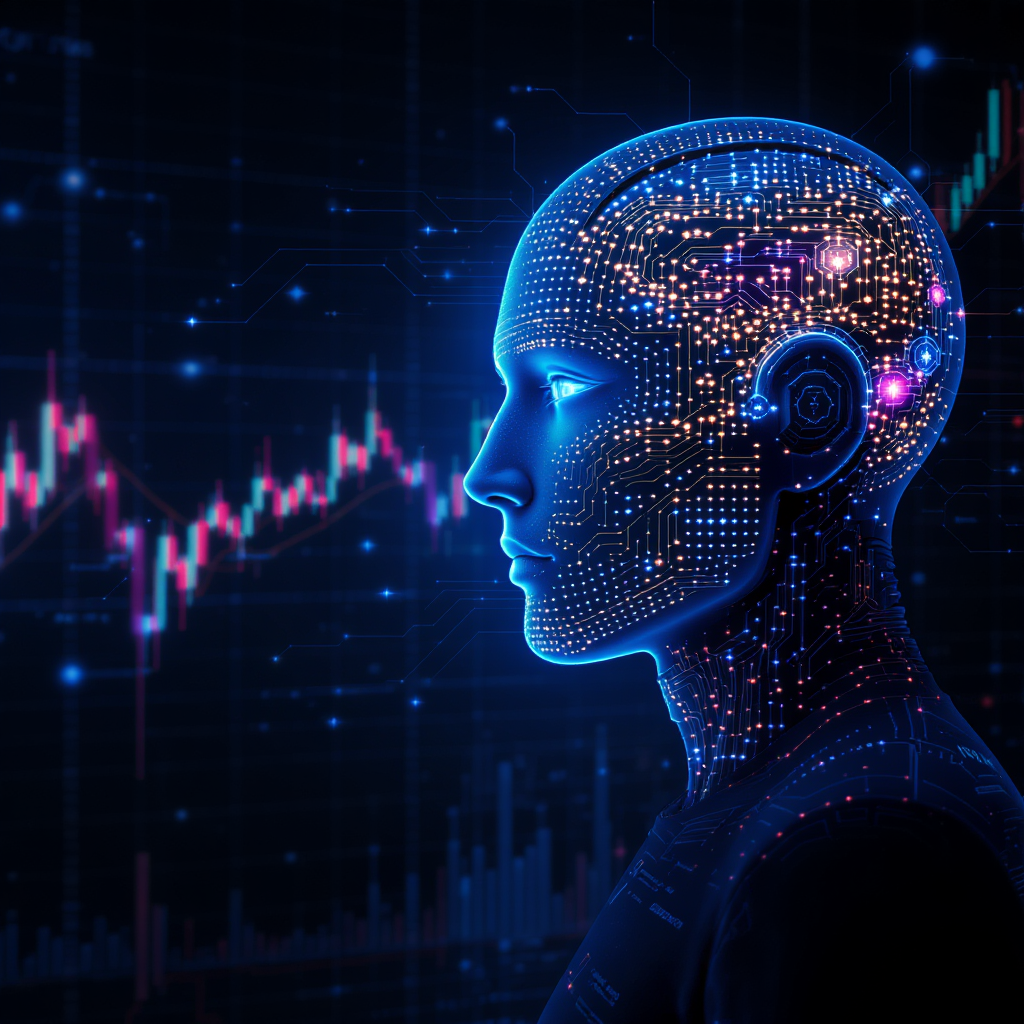Algorithmic trading, the use of computer programs to execute trading strategies, has revolutionized financial markets. However, the field is constantly evolving, with the integration of artificial intelligence (AI) promising to reshape its future. This article explores the transformative potential of AI in algorithmic trading, focusing on its ability to create sophisticated strategies and mitigate inherent risks. We will examine how AI algorithms learn from vast datasets, adapt to changing market conditions, and ultimately outperform traditional methods. We will also discuss the crucial role of risk management in this rapidly evolving landscape, highlighting both the opportunities and the challenges presented by AI’s increasing influence on financial markets. The integration of AI is not without its complexities; therefore, understanding its limitations and potential vulnerabilities is equally important for ensuring robust and sustainable trading practices.
AI-Powered Trading Strategies
AI is rapidly changing the way algorithmic trading strategies are developed and implemented. Traditional methods rely on pre-programmed rules based on historical data and market indicators. AI, particularly machine learning (ML), goes beyond this by enabling algorithms to learn from data, identify patterns, and adapt in real-time. This allows for the creation of significantly more sophisticated strategies capable of capturing fleeting market opportunities and reacting to unforeseen events. Deep learning, a subset of ML, is particularly effective in analyzing complex, high-dimensional datasets such as market sentiment extracted from news articles or social media. These techniques allow for the identification of subtle correlations and patterns that might be missed by human traders or simpler algorithms. Furthermore, reinforcement learning can be used to train agents to optimize their trading strategies over time, leading to potentially higher returns and reduced risks.
Risk Mitigation Through AI
While AI offers powerful tools for enhancing trading strategies, managing risks remains paramount. Traditional risk management techniques often struggle to cope with the speed and complexity of AI-driven trading. AI, however, can also be leveraged to improve risk mitigation. For example, AI algorithms can be used to monitor market volatility, identify potential threats, and automatically adjust trading positions to limit exposure to risk. By analyzing vast amounts of data in real-time, AI can detect early warning signs of market crashes or other adverse events, allowing traders to react proactively. Moreover, AI can enhance fraud detection by identifying unusual trading patterns or suspicious activities that might indicate market manipulation or insider trading. This proactive approach significantly reduces potential financial losses.
Challenges and Ethical Considerations
The integration of AI in algorithmic trading is not without its challenges. One major hurdle is the “black box” nature of some AI models. The complexity of deep learning algorithms, for instance, can make it difficult to understand exactly how they arrive at their decisions. This lack of transparency poses risks, particularly in terms of regulatory compliance and accountability. Another challenge is the potential for bias in the data used to train AI models. If the data reflects existing market biases, the AI algorithms may perpetuate or even amplify those biases, leading to unfair or discriminatory outcomes. Furthermore, ethical considerations surrounding the use of AI in finance need to be addressed. Questions about job displacement, algorithmic manipulation, and the potential for increased market instability need careful consideration and proactive regulation.
The Future of Algorithmic Trading
The future of algorithmic trading is inextricably linked to the continued advancement of AI. We can expect to see increasingly sophisticated AI-powered strategies that leverage advanced machine learning techniques, such as reinforcement learning and generative adversarial networks (GANs), to optimize trading performance and manage risk more effectively. The integration of alternative data sources, including social media sentiment and satellite imagery, will further enhance the capabilities of AI-driven trading systems. However, responsible development and deployment of these systems remain crucial. Robust regulatory frameworks, emphasis on transparency and explainability, and a focus on ethical considerations are essential to ensure that the benefits of AI in algorithmic trading are realized while mitigating potential risks and negative consequences.
Conclusion
The integration of AI in algorithmic trading is transforming the financial landscape, offering unprecedented opportunities for enhanced profitability and risk management. AI-powered strategies, capable of learning, adapting, and reacting to market dynamics in real-time, are revolutionizing trading practices. While AI offers significant advantages, addressing the challenges related to transparency, bias, and ethical considerations is crucial. The future of algorithmic trading hinges on responsible AI development and deployment, ensuring that this technology is used to enhance market efficiency and stability while upholding fairness and transparency. Balancing innovation with robust risk mitigation and regulatory oversight will be essential for navigating the complex and rapidly evolving world of AI-driven finance. This collaborative effort between technologists, regulators, and financial professionals is paramount to building a future where AI empowers both individuals and institutions in the financial markets.
| AI Technique | Application in Algorithmic Trading | Advantages | Disadvantages |
|---|---|---|---|
| Machine Learning | Pattern recognition, predictive modeling, sentiment analysis | Improved accuracy, faster execution, adaptation to changing market conditions | Data dependency, potential for bias, “black box” nature of some models |
| Deep Learning | Analyzing complex datasets, identifying non-linear relationships | Superior pattern recognition in high-dimensional data, handling of unstructured data | High computational cost, difficulty in interpretation |
| Reinforcement Learning | Optimizing trading strategies, learning optimal actions through trial and error | Adaptability, continuous improvement, potential for superior performance | Training time and computational resources needed, risk of unexpected behavior |
References
Investopedia: Algorithmic Trading
Kaggle: Financial Time Series Datasets
arXiv: Research Papers on AI in Algorithmic Trading
Image By: Black Forest Labs






